Bearded irises bring classic beauty and structure to any cottage garden. On our brick homestead, I’ve learned how to grow and care for bearded irises in a simple, practical way. With proper planting, sunlight, and seasonal care, these timeless perennials thrive year after year.
Bearded irises are one of my favorite flowers to grow on our brick homestead. Their tall, elegant blooms and unique textures add a touch of old-fashioned charm while providing structure and rhythm to the garden. Unlike fussy flowers, they’re forgiving, hardy, and return year after year with minimal fuss.
Planting bearded irises is simple if you know what to look for. Choosing the right spot, preparing the soil, and spacing the rhizomes properly ensures healthy growth and vibrant blooms. Over the years, I’ve learned a few tricks that help these flowers thrive while blending beautifully with other cottage garden favorites like roses, hollyhocks, and tulips.
In this guide, I’ll share how I grow and care for bearded irises—from planting and soil preparation to dividing rhizomes, fertilizing, and maintaining blooms throughout the season. Whether you’re new to irises or looking to improve your garden, these tips will help you enjoy these timeless flowers year after year.
This is a pinnable post. Tap or hover over any image in this post to pin to your Pinterest Boards.
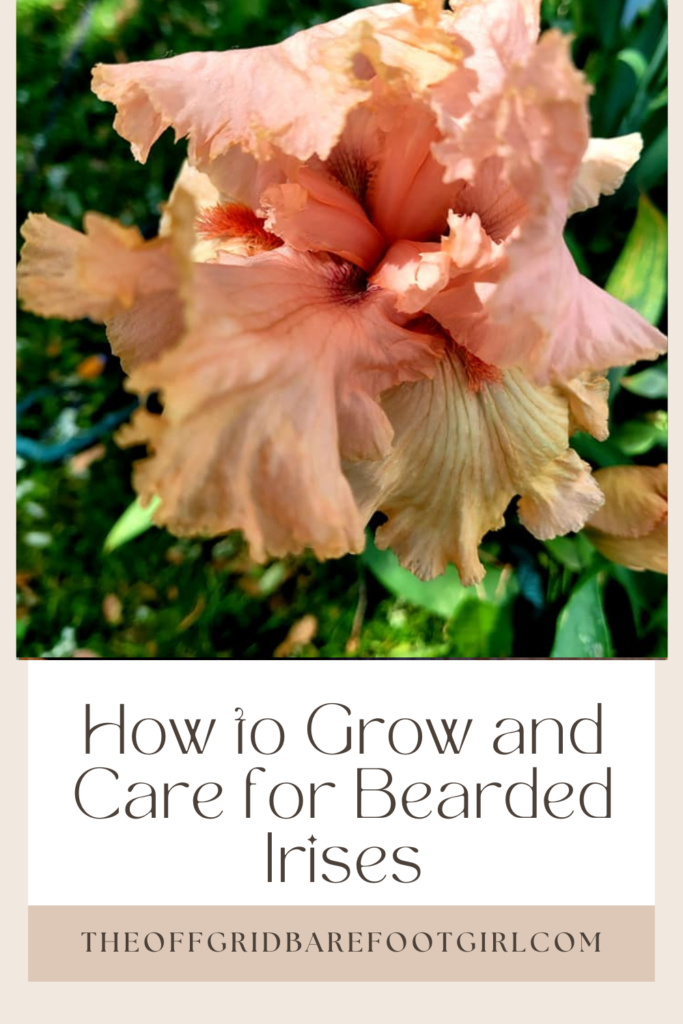
Growing Bearded Irises
Bearded irises bring a quiet magic to my garden, especially on early summer mornings when dew clings to their ruffled petals and sunlight dances across their subtle shades. Their tall, elegant spikes feel almost theatrical, standing proudly among other cottage garden favorites, yet each bloom reveals delicate details up close that make the garden feel alive and personal.
I love how they invite me to slow down and notice the little things. Unlike fleeting flowers, bearded irises bloom with patience, rewarding gentle care with colors that surprise and delight. Each plant has its own personality—some open early, some linger, some reveal unexpected tones—and discovering these quirks becomes a cherished part of the gardening season.
For me, growing bearded irises is more than cultivating beauty; it’s about creating moments of quiet joy and connection with the garden. Their presence reminds me that a homestead garden is a living story, full of color, texture, and subtle surprises that make every barefoot stroll in the yard feel special.
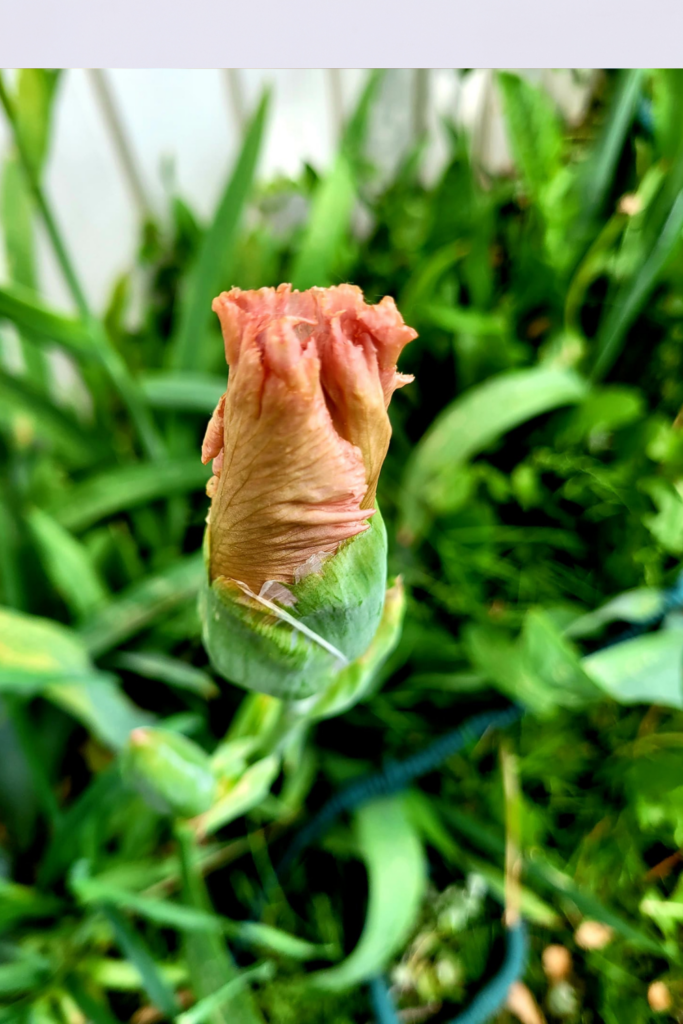
Choosing the Right Bearded Irises
Picking Varieties That Suit Your Garden
Bearded irises come in a variety of colors, bloom times, and heights. I like to choose varieties that are hardy and resilient, with strong stems that won’t flop over in wind or rain. Selecting colors that complement your other cottage garden flowers helps create a cohesive and charming look.
Tall bearded irises make excellent background plants, while shorter varieties work well along borders or near paths. Consider bloom times, too—by planting a mix of early, mid, and late-season bloomers, your garden can stay colorful for weeks on end.
Disease resistance is also important. Some modern hybrids are prone to rot or fungal issues, so I stick with classic, well-tested varieties that flourish in my climate. By choosing wisely, you set your irises up for success before planting even begins.
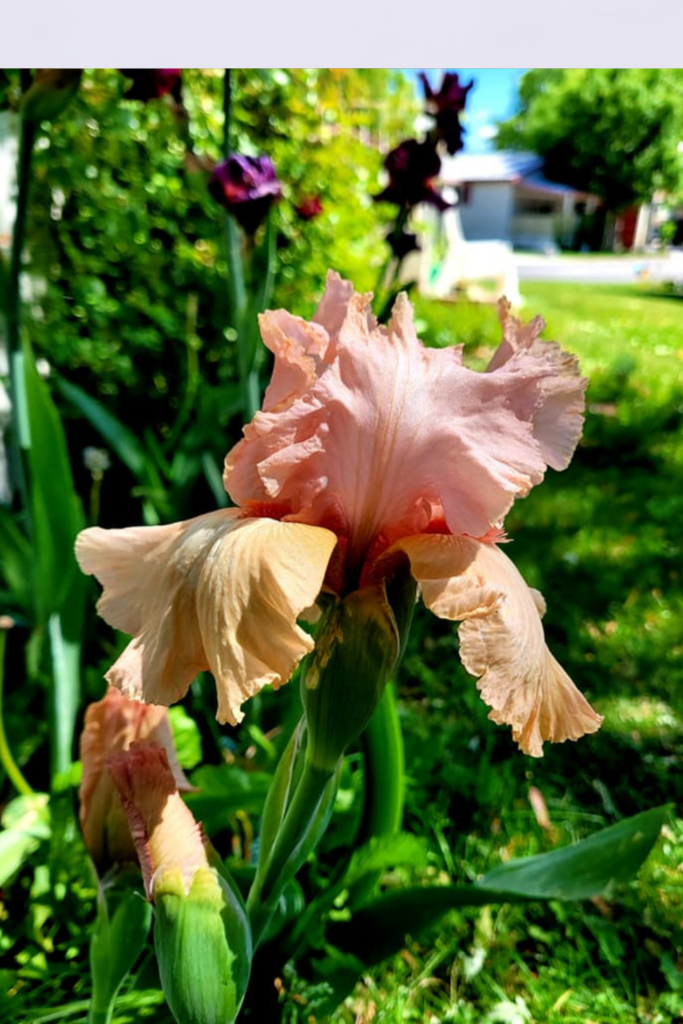
Site Selection and Sunlight Needs
Bearded irises love full sun. I plant mine where they receive at least six hours of sunlight each day, which encourages strong, healthy blooms. On a brick homestead, sunny beds or open areas near paths work perfectly.
Well-drained soil is essential. Irises do not like to sit in water, so I either plant on slight mounds or amend the soil with compost to improve drainage. A little preparation goes a long way in keeping roots healthy and preventing rot.
Spacing is another key factor. I plant rhizomes about 12–18 inches apart to ensure air circulation, which helps prevent disease and allows each plant to grow to its full potential. With proper sunlight and spacing, bearded irises thrive beautifully.
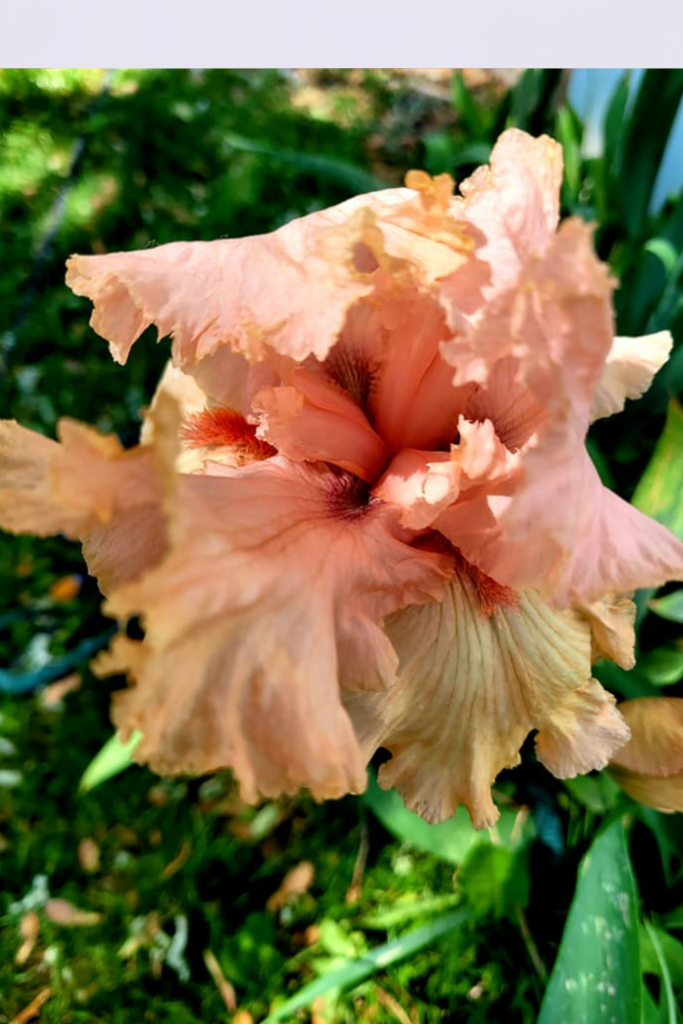
Planting Bearded Irises
Preparing the Soil
Before planting, I loosen the soil and incorporate compost or well-rotted organic matter. Irises prefer slightly rich soil but don’t need to be overly fertilized. Good soil structure ensures the rhizomes establish quickly and grow strongly.
I also remove weeds and debris from the bed to reduce competition. A clean planting area makes a huge difference in the early stages of growth. Hollyhocks, tulips, or roses nearby benefit from similar preparation, creating a cohesive and healthy garden.
Finally, I level the bed gently, making sure there’s a slight mound or raised area for each rhizome. This helps with drainage and ensures the roots don’t sit in water, which is one of the main reasons bearded irises fail.
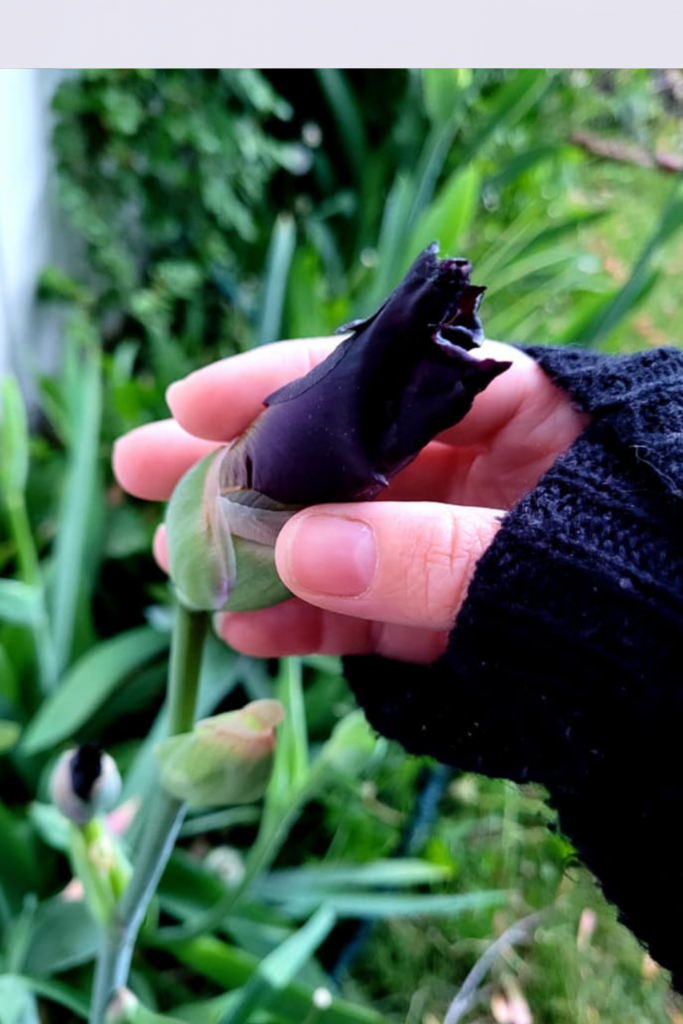
Planting and Spacing Rhizomes
When planting, I place each rhizome so the top is just barely exposed above the soil. This encourages strong root growth while preventing rot. I space rhizomes generously to allow airflow and reduce overcrowding.
Once planted, I firm the soil gently around the rhizome and water lightly to settle it. It’s important not to bury the rhizome completely—exposed tops help prevent disease and encourage vigorous growth.
With proper spacing and planting, bearded irises quickly establish themselves and produce long-lasting blooms. This simple approach saves time and ensures healthy plants for years to come.
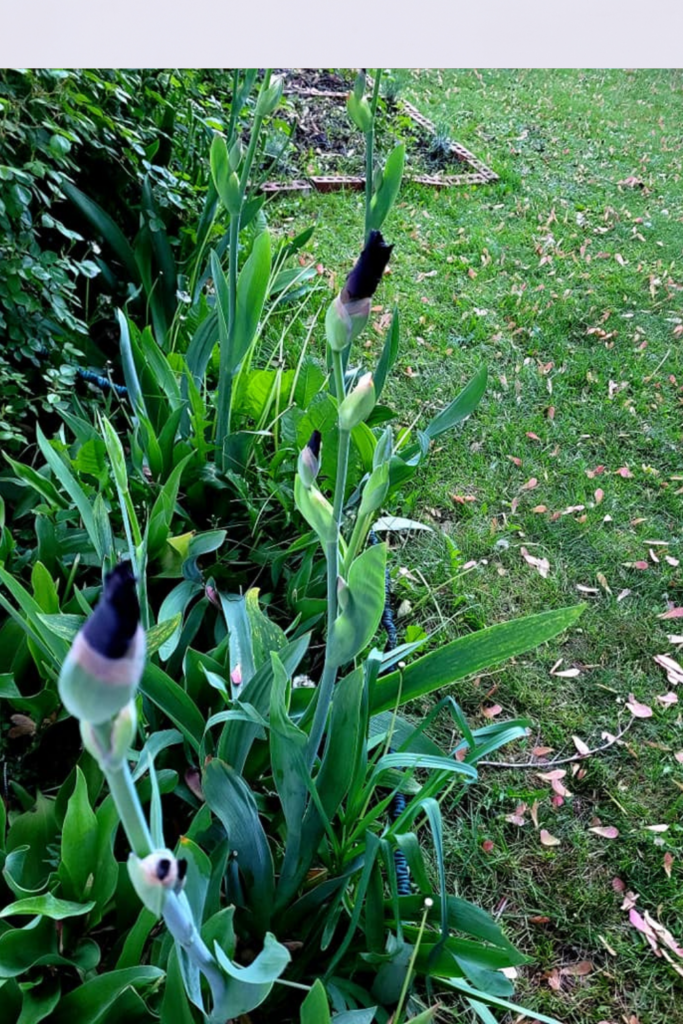
Caring for Bearded Irises
Watering and Fertilizing
Bearded irises need moderate watering, especially during dry periods. I water deeply at the base of the plant, avoiding wetting the foliage, which can invite disease. Too much water, especially around the rhizome, can cause rot, so balance is key.
Fertilizing is simple—an all-purpose, low-nitrogen fertilizer in early spring encourages blooms without promoting excessive leaf growth. I also add compost annually to keep the soil rich and healthy. Overfeeding can harm irises, so I stick to light, natural amendments.
By giving bearded irises consistent but careful care, they reward you with vibrant blooms that add elegance and structure to the garden year after year.
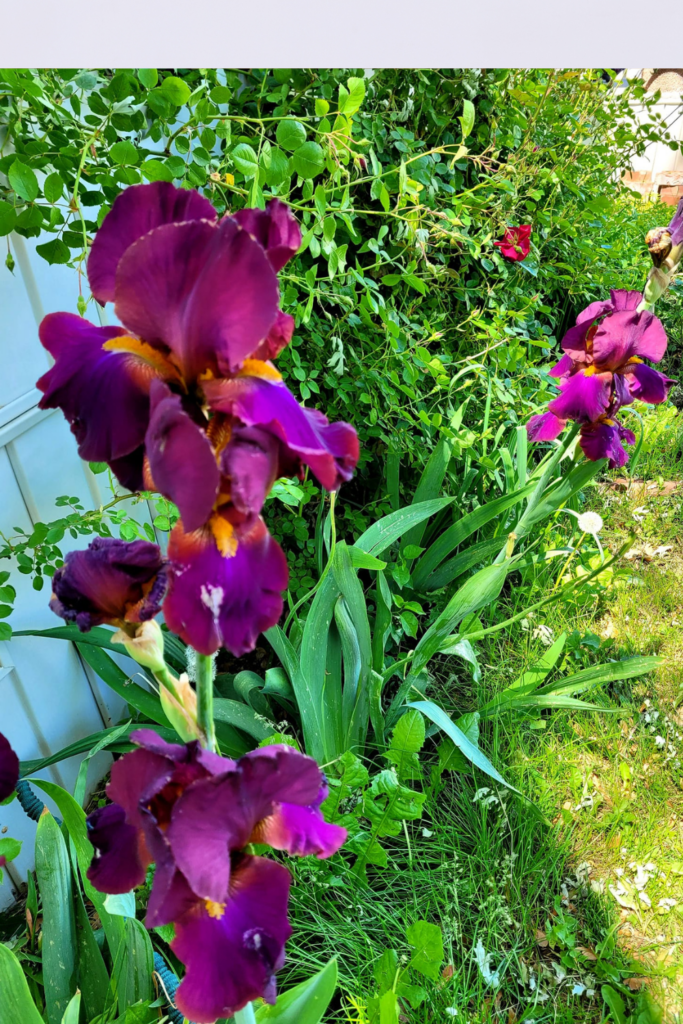
Dividing and Maintaining Plants
Bearded irises should be divided every 3–4 years to maintain vigor and prevent overcrowding. I dig up the clumps after flowering, separate healthy rhizomes, and discard old or diseased ones.
Dividing also gives me a chance to reposition plants for better spacing, sunlight, and visual impact. It keeps the garden tidy and ensures blooms remain strong and consistent.
Routine maintenance includes removing dead leaves and spent flowers, which helps prevent disease and encourages new growth. With these small steps, bearded irises thrive with minimal fuss.
Using Bearded Irises in Your Cottage Garden
Bearded irises provide height, texture, and old-fashioned charm to any garden. On our brick homestead, I plant them in clusters along borders, walkways, or near other perennials to create layered, lived-in beds.
These flowers fit seamlessly with roses, tulips, and hollyhocks, creating a harmonious cottage garden look. They attract pollinators and return reliably, making them both beautiful and practical.
In addition to visual appeal, bearded irises are low-maintenance perennials that thrive in the rhythms of a self-sufficient garden. Their blooms last for weeks, and the plants often require little care beyond basic maintenance, making them ideal for gardeners who value practicality as much as beauty.
How to Design a Cottage Garden: Growing a Beautiful Mess
Conclusion
Bearded irises are a staple of old-fashioned cottage gardens, offering elegance, structure, and reliable blooms year after year. With proper planting, sunlight, and care, they thrive with minimal effort and create a timeless look on a brick homestead.
By dividing rhizomes, providing good drainage, and keeping up with simple maintenance, you can enjoy their tall, dramatic flowers season after season. These hardy perennials blend beautifully with other cottage garden favorites, creating a garden that feels lived-in, practical, and full of charm.
Growing bearded irises is a reminder that beauty and simplicity can coexist. On a brick homestead, they become part of the rhythm of the garden—a trusted companion that returns each year.
For more inspiration to grow your own cottage garden, read my comprehensive guide: Cottage Gardening on a Brick Homestead: How I Grow a Beautiful, Practical Garden the Old-Fashioned Way.
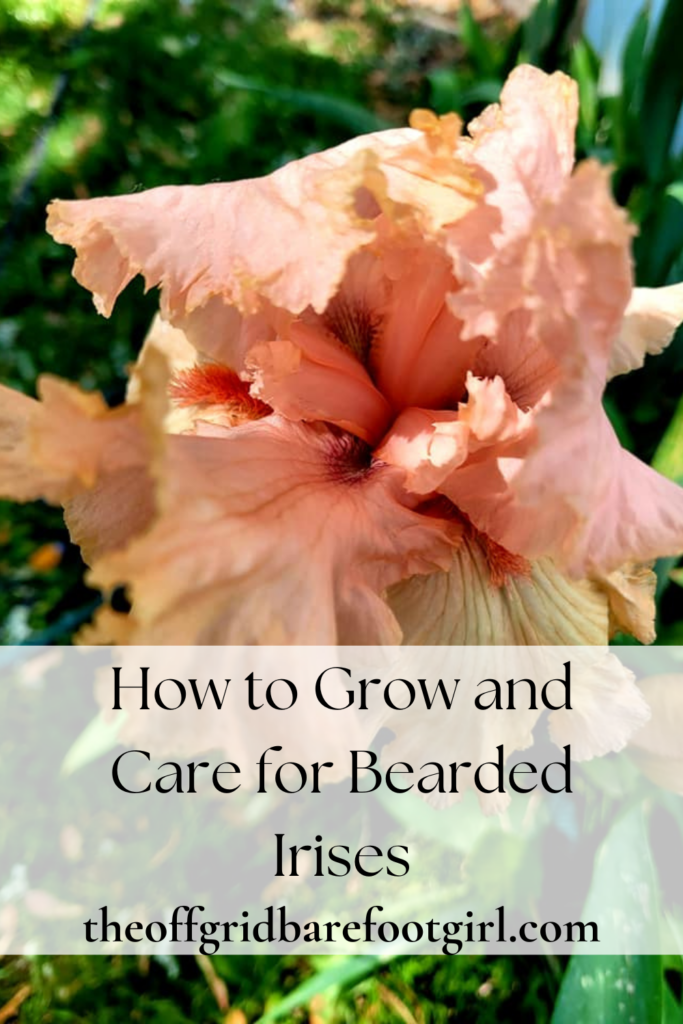
Frequently Asked Questions
1. When do bearded irises bloom?
Most bearded irises bloom in late spring to early summer, usually around May or June, depending on your climate. Early, mid, and late-season varieties can extend bloom time.
2. How do I plant bearded iris rhizomes?
Plant rhizomes just barely covered with soil, spacing them 12–18 inches apart. Ensure the soil drains well and water lightly after planting.
3. How often should I divide bearded irises?
Every 3–4 years, after flowering. Divide healthy rhizomes, discard old or diseased ones, and replant to maintain vigor and blooms.
4. Can bearded irises grow with other cottage garden flowers?
Absolutely. They pair beautifully with roses, hollyhocks, tulips, and perennials, adding height and texture while thriving with minimal care.
Summary
I hope I have inspired you to grow flowers in your garden with these tips and products.
If you were encouraged by this post, I invite you to check out my FREE Printables Page for fun free printables, planners, and charts.
ENTER MY FREE Printables Page HERE
Here are some more of my gardening inspiration posts to check out!
How to Grow and Care for Tiger Lilies
The Ultimate Guide to Growing Your Dream Flower Garden!
The Best Perennial Flowers for a Low-Maintenance Garden!
How to Design a Cottage Garden: Growing a Beautiful Mess
Roses: How to Grow and Care for Roses
Hollyhocks: How to Grow and Care for Hollyhocks
Tulips: How to Grow and Care for Tulips
PeeGee Hydrangea Trees: How to Grow and Care for a PeeGee Hydrangea Tree
Bearded Irises: How to Grow and Care for Bearded Irises
Blessings,
The Off Grid Barefoot Girl

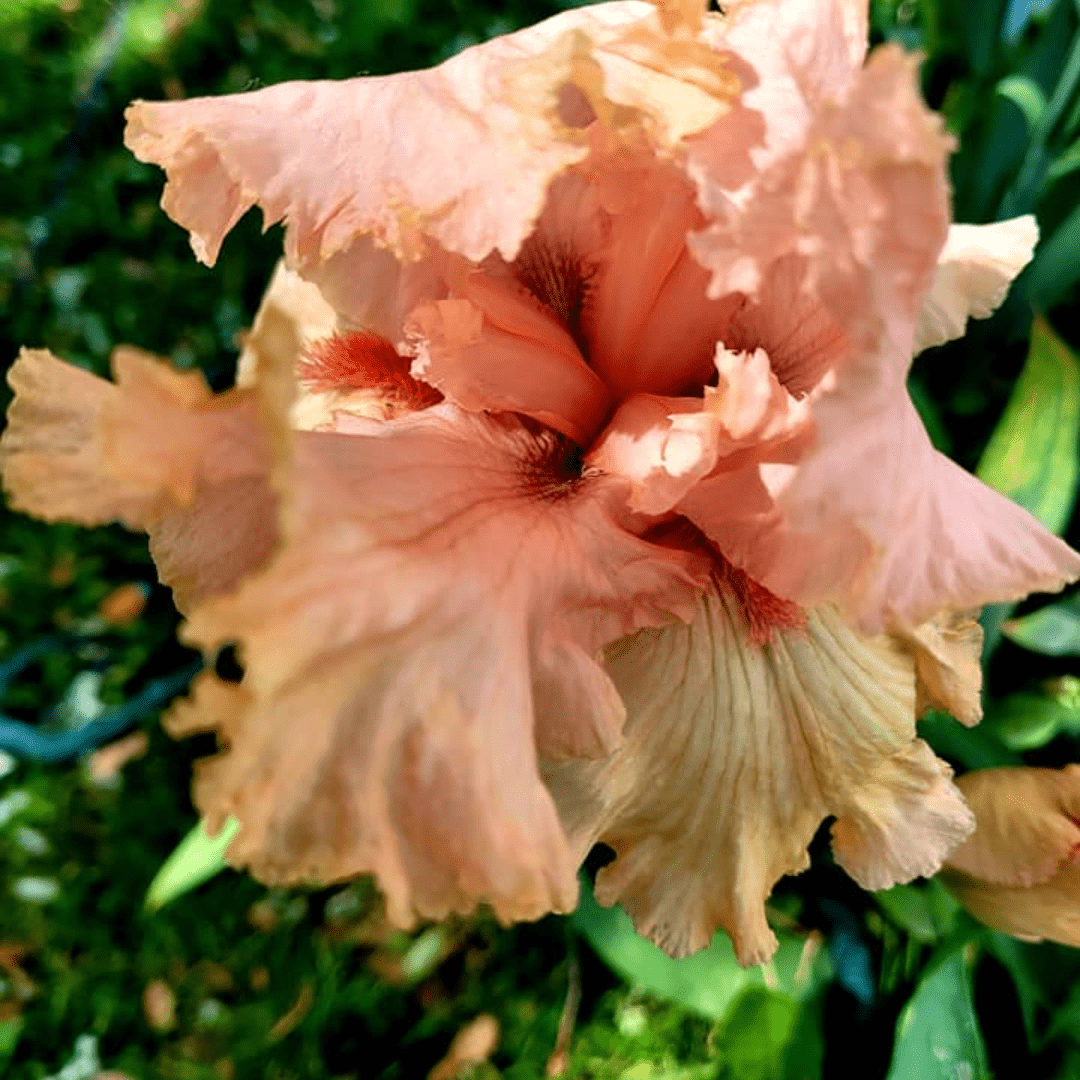



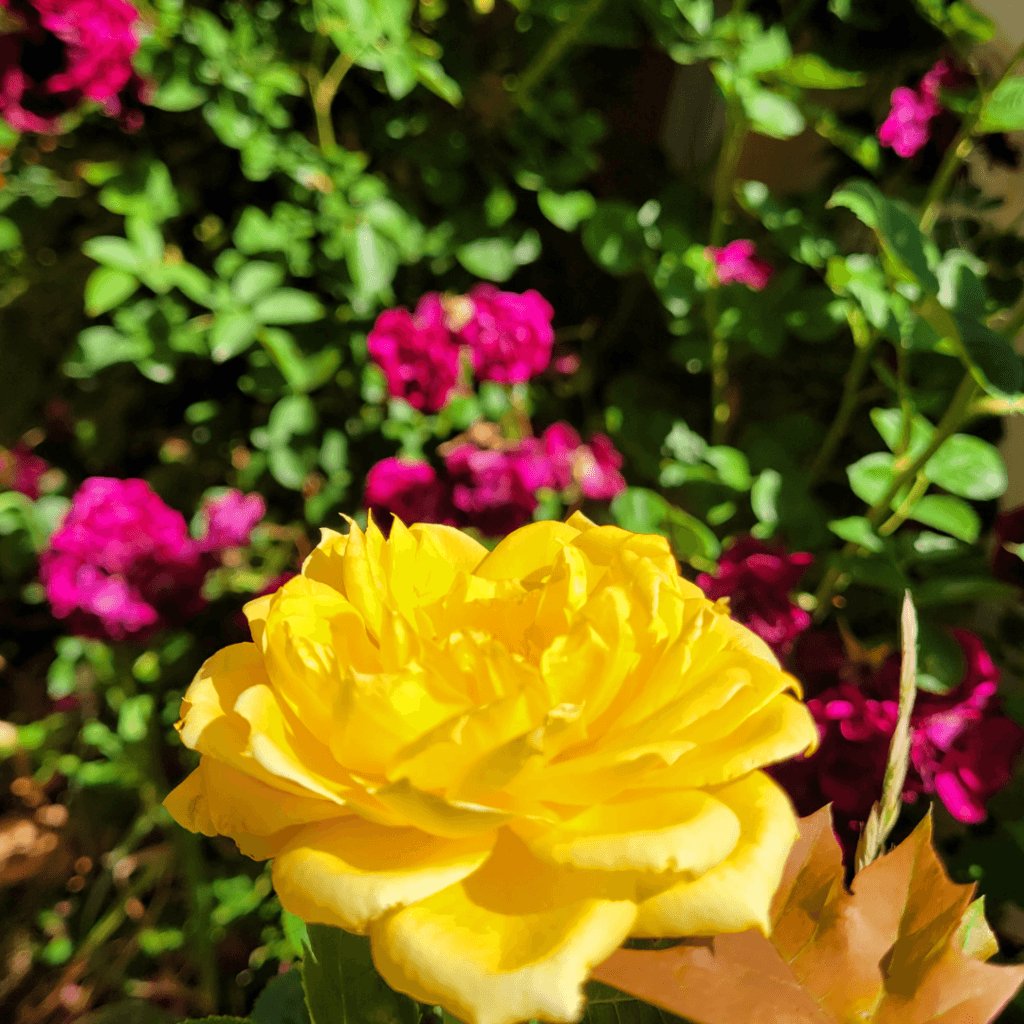
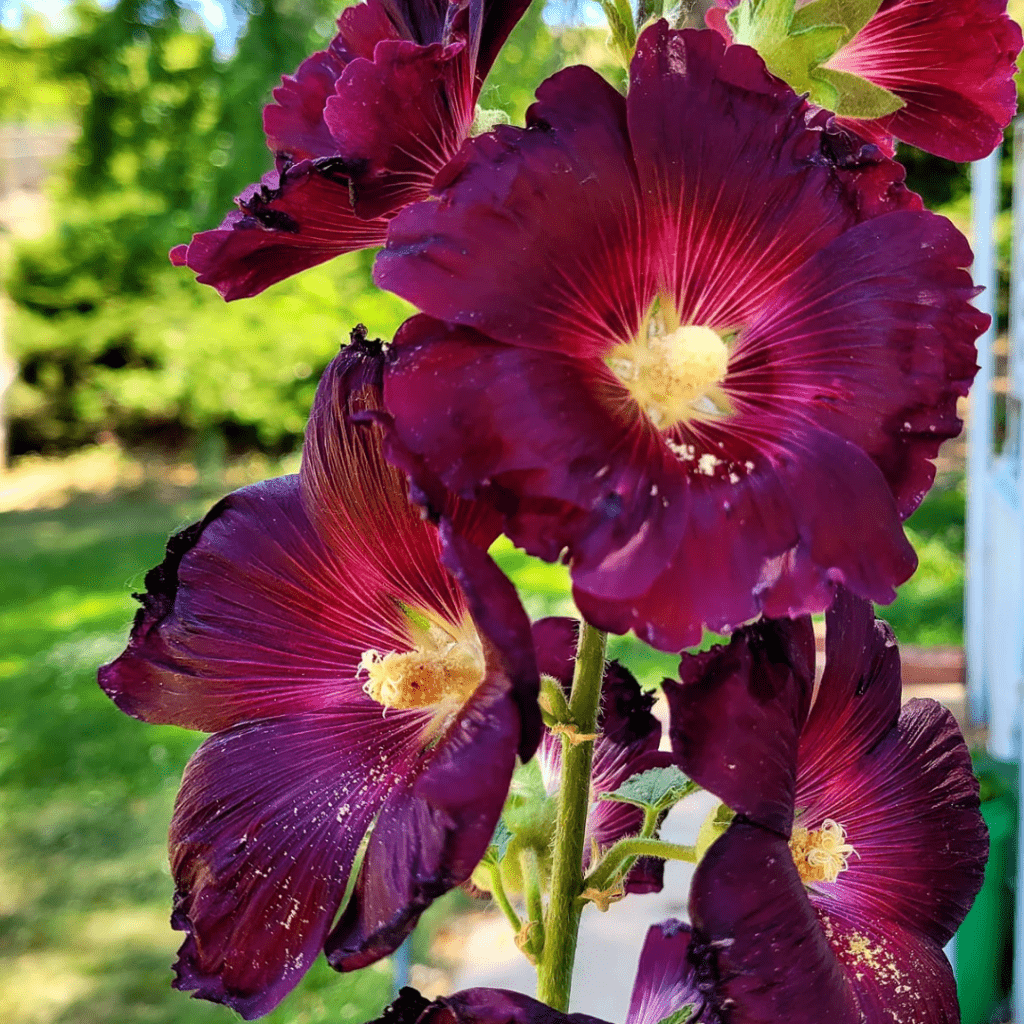
Thanks for sharing. I read many of your blog posts, cool, your blog is very good.